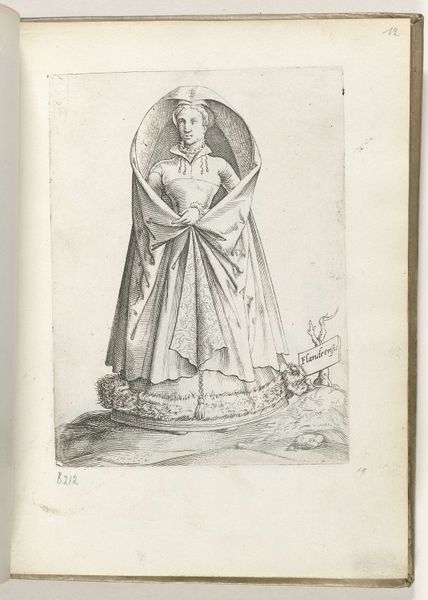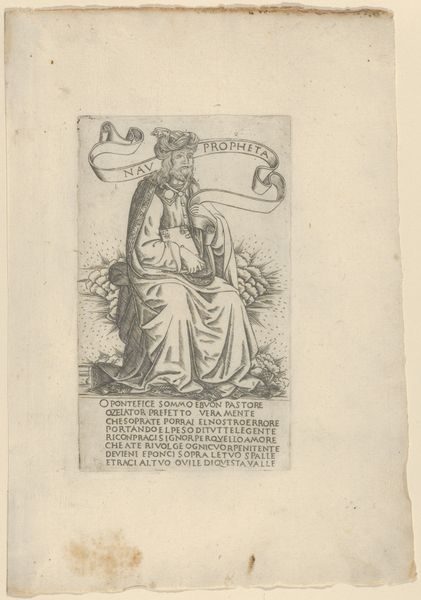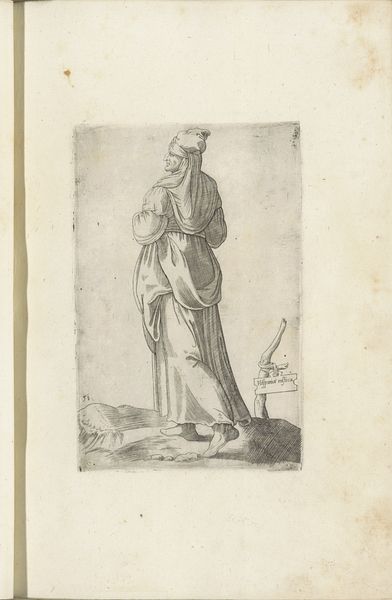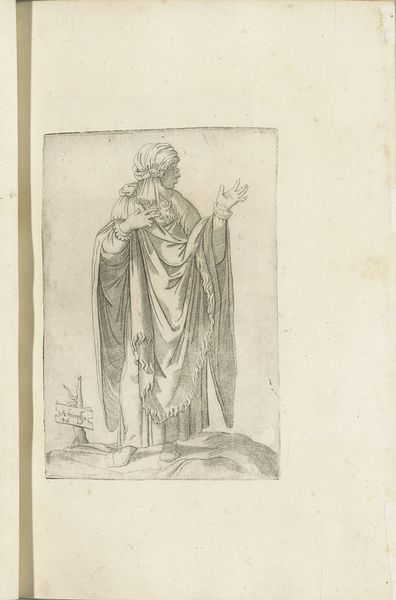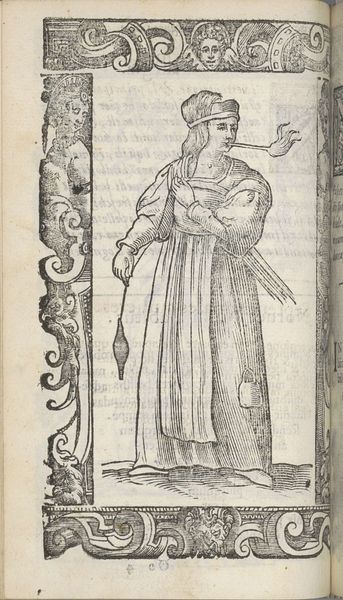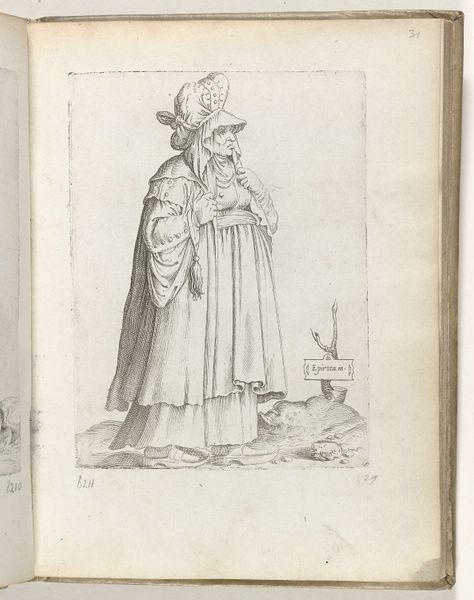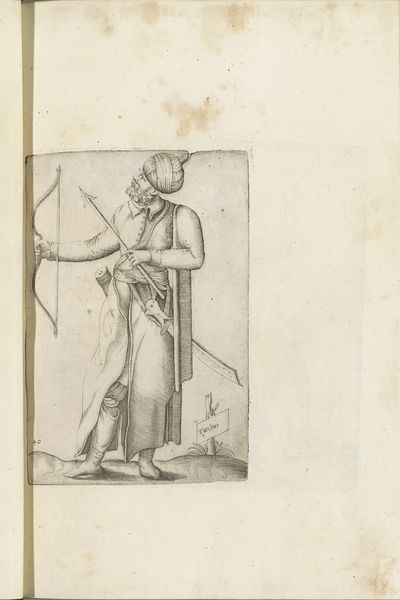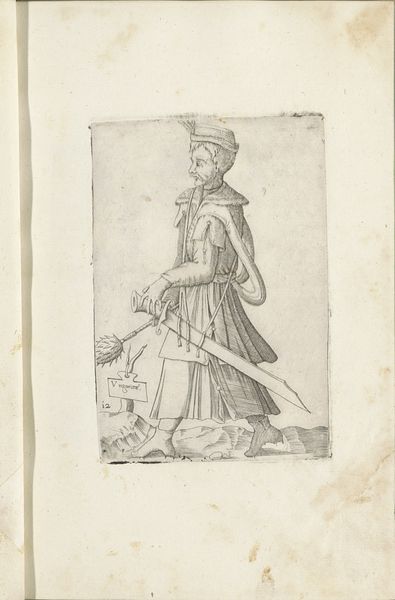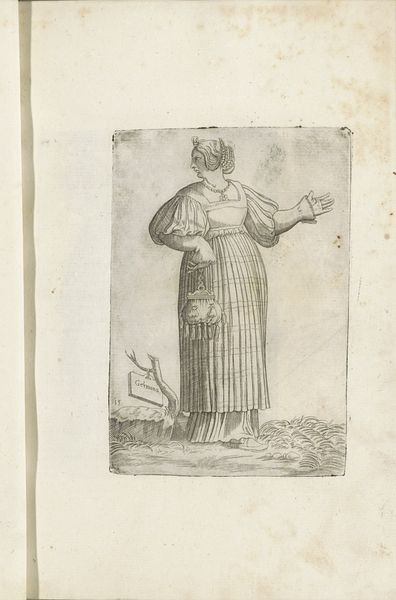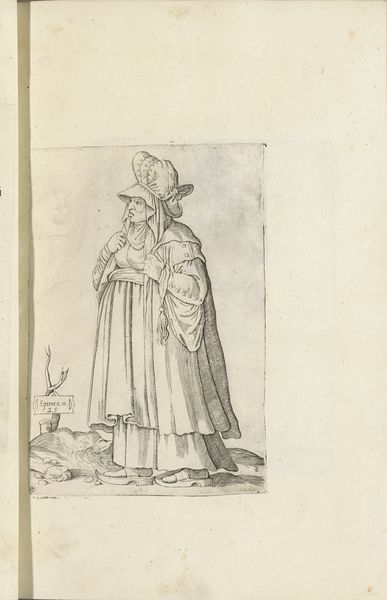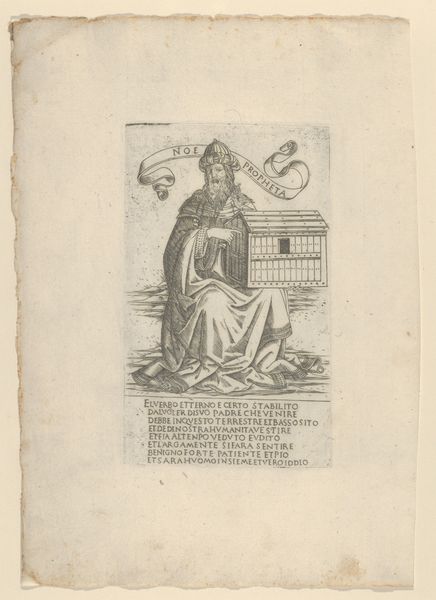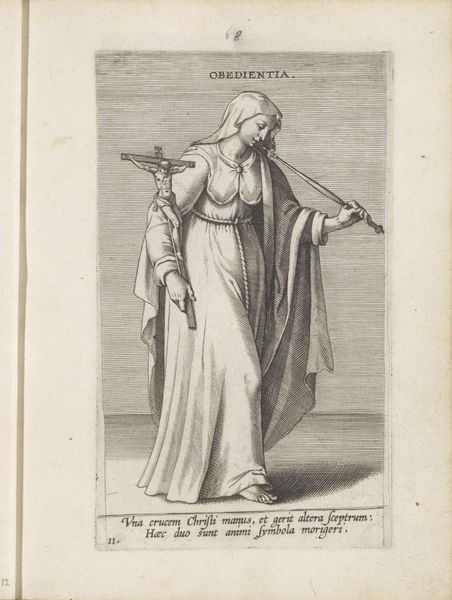
drawing, paper, engraving
#
portrait
#
drawing
#
mannerism
#
paper
#
history-painting
#
engraving
Dimensions: height 265 mm, width 195 mm, height 150 mm, width 105 mm
Copyright: Rijks Museum: Open Domain
Curator: What a wonderfully peculiar engraving! Here we see “Vrouw uit Vlaanderen,” or "Woman from Flanders," crafted in 1569 by Ferando Bertelli. Editor: Yes, the most immediate thing that strikes me is its strangeness – the delicate lines forming this woman, almost cocooned by that billowing drapery. It feels both regal and oddly fragile. Curator: The very process of engraving invites this reading. Observe the thin lines, almost surgically etched. Note how the image, constructed by layering miniscule marks, presents her as a figure caught between solidity and ethereality. Editor: That makes me think about the socio-economic dimensions here – the engraving medium itself. It's not a grand oil painting, but a print, hinting at a potentially broader distribution. What does that imply about the maker's intention and, even, the availability of such representations to a wider, possibly mercantile, audience? Also, note that the dress that she is wearing looks as if it could be extremely heavy. Curator: Precisely! Consider also how Bertelli emphasizes Mannerist elongation and an artificial grace – distorting natural forms for aesthetic effect. It's less about accurate representation and more about idealizing form through deliberate artistic intervention. The symbolism, as you pointed out, even resides in that drapery. It becomes a visual signifier. The texture denotes not just the material’s physical presence but also its meaning as luxury, status and regional identity. Editor: Looking closer, it does seem that materiality dictates the representation. Those linear marks echo textile manufacturing—threads being woven, a direct analogy between the crafting of the image and the woman’s garments. We can almost trace the flow of production, and the value ascribed to those textiles through global trade networks of that era. Curator: A compelling reading! Her gaze meets ours directly, but it lacks any true emotionality. Instead, the surface takes precedence: line, texture, composition. She is, perhaps, an exquisite design first, and a woman second. Editor: Ultimately, "Vrouw uit Vlaanderen" offers more than just an image; it's a material trace of social history, a snapshot of commerce, and artistic practice interwoven. Curator: Yes, and by closely attending to Bertelli's stylistic manipulations, we find within the surface its own complex system of representation, constantly at play with visuality itself.
Comments
No comments
Be the first to comment and join the conversation on the ultimate creative platform.
